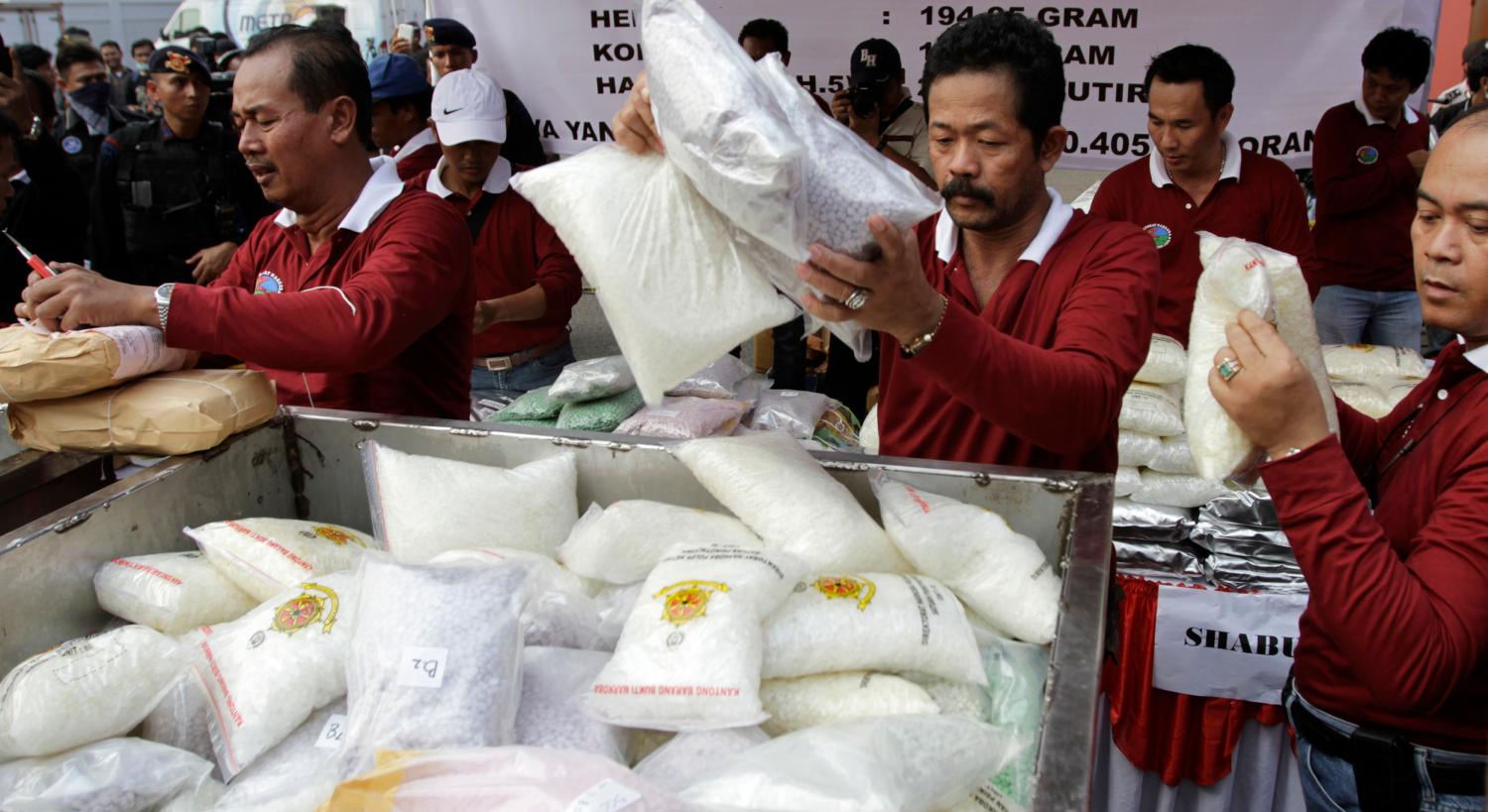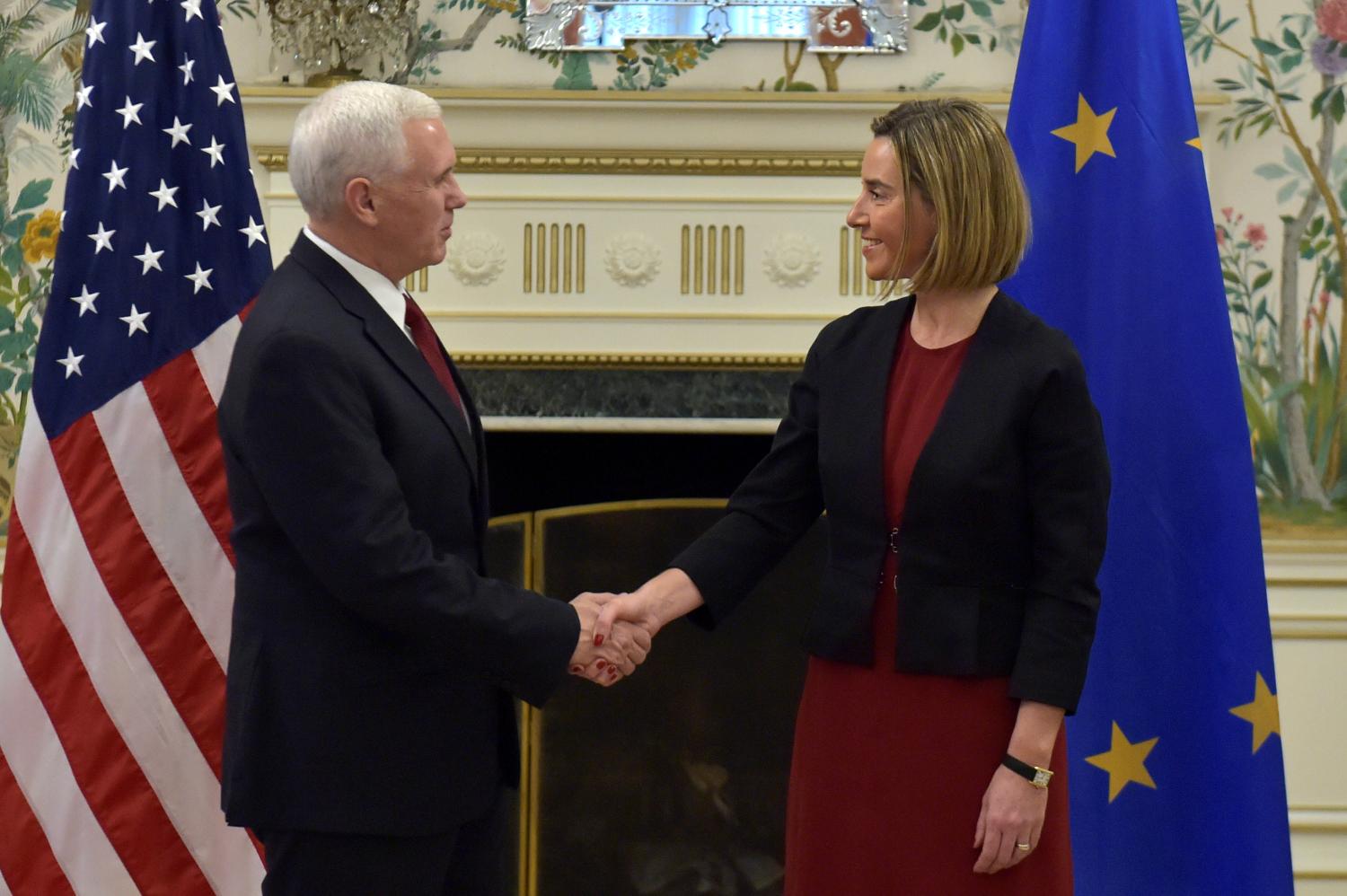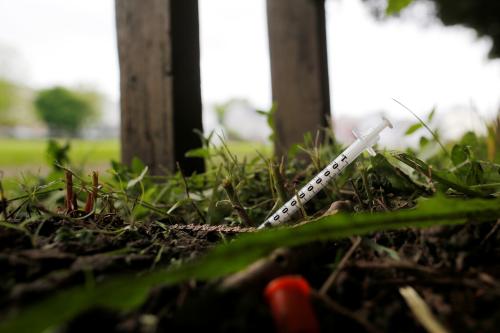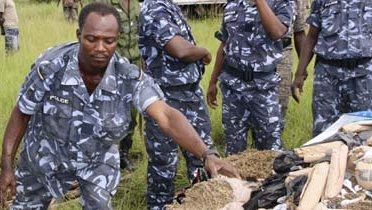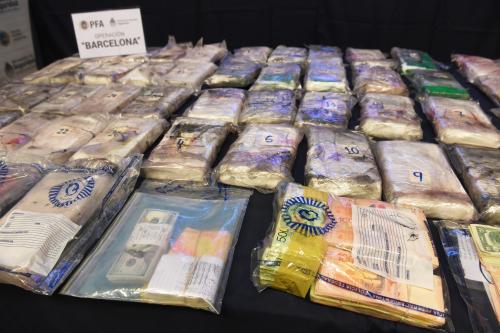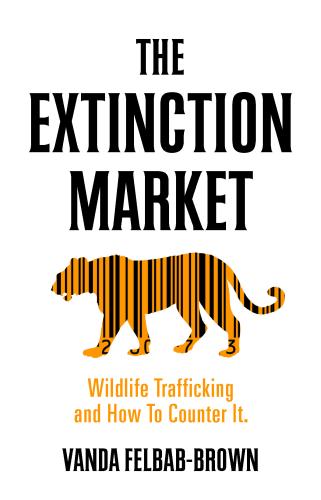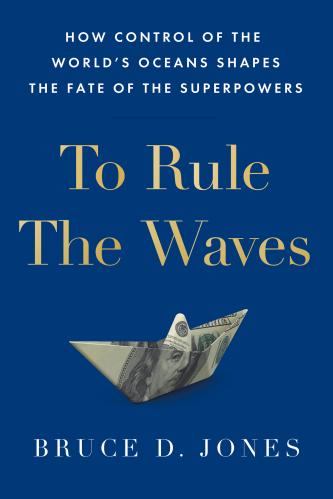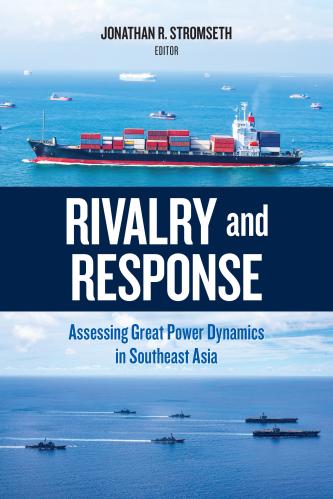Yet another Western tourist – this time a 56- year-old grandmother from Britain – has become the face of drug trafficking in Indonesia. Her death sentence for smuggling 10 pounds of cocaine worth of $2.5 million in her suitcase has riveted international media. Her story – that she was coerced to smuggle the drugs in order to protect her children and grandchildren whose safety was at stake – vaguely resembles the misfortunes of Bridget Jones from the movie Bridget Jones: The Edge of Reason. But so far, no miraculous Mark Darcy has landed to liberate her from prison and death row. Rather, human rights groups have criticized the British government for not doing enough to provide an adequate legal defense for Ms. Lindsay Sandiford. But as unfortunate as her story is, and even as it is but one in a long line of Western tourists dramatically apprehended and punished for drug trafficking in Southeast Asia, it is to a great extent a distraction from the drug trafficking problems and trends that Indonesia faces.
Like other countries in Southeast Asia, Indonesia has for decades applied extremely harsh penalties for drug trafficking and drug use. Like in Ms. Sandiford’s case, Indonesian law punishes drug smuggling with the death penalty, or at least a decades-long imprisonment. Merely getting caught smoking a joint can land one in jail for several years. As with elsewhere in Southeast Asia, such harsh penalties have done little to decrease drug trafficking in Indonesia.
In fact, both drug use and drug trafficking appear to have increased in the country. In 2011, Indonesia’s user population was estimated to be approximately 4.1 million, or 1.6 percent of Indonesia’s total population. In 2009, that user population was believed to be only 500,000.[1] If the estimates are equally correct – or more precisely make the same (under)estimation mistakes for both years – that would be an astounding eight-fold increase in three years. The expansion of Indonesia’s middle class, its growing purchasing power underpinned by the country’s economic boom fueled by its primary commodity exploitation and resulting GDP growth rates of over six percent, the stress of increasing inequality, and the democratization and political opening of the post-1998 era are all the kinds of triggers that can increase illicit drug consumption. Just like in China, Indonesians have been developing a taste for methamphetamines, ecstasy, heroin, and ketamine.
If the number of drug seizures, which can be signs of both greater drug flows and greater law enforcement effectiveness, are any indication, trafficking too seems to be increasing. Drug shipments intercepted at the Soekarno Hatta International Airport in Jakarta, arguably the most patrolled and monitored port of entry into the country, have risen from 16 in 2008 to 63 in 2010 and 52 in 2011.[2] With over 18,000 islands and a coastline of over 54 thousand kilometers, the Indonesian archipelago offers the perfect geography for smuggling, never mind how under-resourced and notoriously corrupt the Indonesian law enforcement apparatus is, and how weak and bribery-susceptible the justice system. Even with much less corruption in Indonesia – as critical and pivotal an achievement as that would be – and far greater resources devoted to counternarcotics enforcement, Indonesia would still be the trafficker’s paradise. Particularly since for several years now, prices of illicit drugs in Indonesia are believed to have remained higher than elsewhere in Southeast Asia.[3]
With the poor rule of law and the pervasive and deeply-ingrained corruption that exists in the country, Indonesia’s law enforcement and military officials, even more so than their counterparts elsewhere in the world, are perfectly positioned to dominate Indonesia’s drug trade. The dramatic court showcases of Western tourists smuggling drugs aside, examples of military and law enforcement complicity in drug trafficking abound. Rather laughably, officials at one of Indonesia’s high-security prisons, for example, have been caught cooking meth and supplying both the prison and the nearby city.[4] According to U.S. diplomatic cables released by Wikileaks, Indonesian military commanders in West Papua have participated in all manner of smuggling, including drug and timber trafficking across the border with Papua New Guinea.[5]
Importantly, however, Indonesia is no longer just a transit country for illicit drugs heading to Australia, China, and Japan, but is also increasingly a destination country. It is also a hot and rapidly expanding meth production center. Since cold medications containing pseudoephedrine are sold in Indonesia without prescription or any registration required, as they used to be in the United States until the early 2000s, cooking meth is easy. A major producer of methamphetamines itself, China supplies the pseudoephedrine both to Indonesia’s pharmaceutical industry and illicit market in a rather unregulated and unmonitored manner.
Ever more, the meth cooks in Indonesia are native, instead of the Dutch who would arrive in their former colony to produce the methamphetamines. Indeed, one of the most important developments in the Indonesian drug market is the growth of Indonesia’s domestic production capacity. The expansion of the synthetic drugs market and the domestication of production have potentially large transformative effects on Indonesia’s landscape of organized crime. Western tourists may well be those most visibly apprehended in Indonesia, but the formation of powerful Indonesian drug-trafficking groups can radically transform the structure and characteristics of the Indonesian criminal market. The emergence of far more powerful and vertically-integrated drug-trafficking groups could alter the market’s proclivity toward violence. So far, it has been a rather peaceful market. It could also change the relationship between the Indonesian state, military and law enforcement officials, and politicians on the one hand and Indonesia’s criminal gangs on the other – a complex web described in Indonesia Field Report I on urban gangs. With far greater profits at stake than in the previous drugs-for-tourists deals, a large meth market is also bound to attract the attention of powerful organized crime groups from other Southeast Asian countries and China, potentially triggering turf wars over the market and once again fundamentally altering the relationship between state and crime in Indonesia. Already, members of Malaysian drug syndicates attempting to smuggle drugs are caught with increasing frequency at Jakarta’s airport.[6]
Although the growing meth market is potentially radically transformative of Indonesia’s criminal market and is certainly highly lucrative, Indonesia is hardly a newcomer to the drug trade. Along with Cambodia, the Philippines, and India, Indonesia has long been a significant producer of cannabis. The Aceh region in Sumatra has been one of the primary cultivation areas, with the pot profits funding Acehnese secessionists and Indonesian jihadists as well as poor farmers.
Historically, various foreign as well as domestic political actors profited from the illicit and licit drug trade in Indonesia. Opium poppy used to be cultivated in Borneo and other islands of the archipelago during the 19th century. At the turn of the 20th century, the Dutch imported opium from British India, Persia, and Turkey and sold it in legal government-sponsored shops and smoking outfits as well as to pharmaceutical companies. The Japanese occupation forces taxed the opium-processing factories as did Sukarno’s pro-independence forces who took over the factories from the Japanese. After the end of World War II, the pro-independence parallel government smuggled out large quantities of illegal opium to Singapore to generate revenues to fight the Dutch.[7]
More surprisingly, coca, the quintessential Latin American drug-producing plant, also used to be cultivated in Indonesia. During the 1870s, a Javanese coca cultivar was developed with leaves containing about 1.5 percent cocaine, a much higher potency than the South American coca varieties had at that time. Foreign sales of coca leaves subsequently boomed, with over 1,000 tons of leaves exported to Amsterdam for processing into cocaine in 1912. By 1920, coca exports had increased to 1,600 tons, equivalent to 25 tons of cocaine and surpassing the level of cultivation in Peru and Bolivia during that period.[8] As attitudes toward cocaine use began to change during the 1930s and the European market shrank, Indonesia’s coca cultivation and exports dwindled. By 1935, coca leaf exports from Java fell to less than 10 percent of peak production, and after a few years coca cultivation in Indonesia rather precipitously stopped. The expansion of the global illicit trade in cocaine after the 1970s fueled a massive coca cultivation expansion in the Andes, yet Indonesia’s cultivation has not returned. But now, the illicit market in synthetic drugs has robustly taken off.
Of the various smugglers I was able to interview in Indonesia during my research there in the fall of 2012, none were as reticent as the drug smugglers. Those who organized illegal mining and logging bragged with pride about their capacity to bribe Indonesian authorities – see Indonesia Field Trip Report III on illegal logging and mining. Wildlife poachers and traffickers exhibited with glee, and without any remorse, the animals they slaughtered – see Indonesia Field Trip Report IV on wildlife trafficking. But those who supposedly could talk about local drug peddling and trafficking were tight-lipped, nervously looking over their shoulders and denying any knowledge. The differential penalties – very harsh for drug trafficking and minimal for illegal logging, mining, and wildlife trafficking – may not have reduced the intensity of illicit drug flows in Indonesia, but they have silenced the participants in the illegal drug trade. And yet one needs to wonder not only about the readiness of Indonesia’s law enforcement to cope with the potential growth and power of Indonesia drug trafficking groups, but also about its priorities. The illicit drug trade often generates the most international opprobrium; yet it is the illicit as well as licit destruction of Indonesia’s biodiversity that is most pressing and requires urgent attention from the Indonesian government and law enforcement. After all, the drug trade is in renewable, nondepletable resources — unlike Indonesia’s forests and unique species that are being overexploited and are disappearing at breakneck speed. Once they are gone, there is no way of bringing them back. Meth will be cooked and consumed decades from now. The only question is who will control the meth market and what kind of political power the market will generate.
[1] United States Department of State Bureau for International Narcotics and Law Enforcement Affairs, International Narcotics Control strategy Report, March 2012, http://www.state.gov/documents/organization/187109.pdf: 262-266.
[2] Multa Fidus, “Malaysian Syndicates Dominate Drug Smuggling in RI,” Jakarta Post, 26 April 2012, http://www.thejakartapost.com/news/2012/04/26/malaysian-syndicates-dominate-drug-smuggling-country.html.
[3] Interview with counternarcotics officials, Jakarta, October 2012. Given Indonesia’s rather limited and varied efforts to collect systematic drug data as well as frequent short-term fluctuations in drug prices, such assessments need to be taken with a grain of salt.
[4] Wahyudi Soeriaatmadja, “Indonesian Drug Trafficking Busts Doubled in 4 Years,” Jakarta Globe, 4 April 2011, http://www.thejakartaglobe.com/home/indonesian-drug-trafficking-busts-doubled-in-4-years/433371.
[5] Philip Dorling and Nick McKenzie, ‘Indonesian Army Linked to Drugs,” Sydney Morning Herald, 23 December 2010, http://www.smh.com.au/technology/technology-news/indonesian-army-linked-to-drugs-20101222-195kx.html.
[6] Fidus.
[7] Bertil Lintner, Blood Brothers (New York: Palgrave Macmillan, 2002): 290.
[8] David Musto, “International Traffic in Coca through the Early 20th Century, Drug and Alcohol Dependence, 49(2), January 1, 1998: 145-156.
The Brookings Institution is committed to quality, independence, and impact.
We are supported by a diverse array of funders. In line with our values and policies, each Brookings publication represents the sole views of its author(s).

